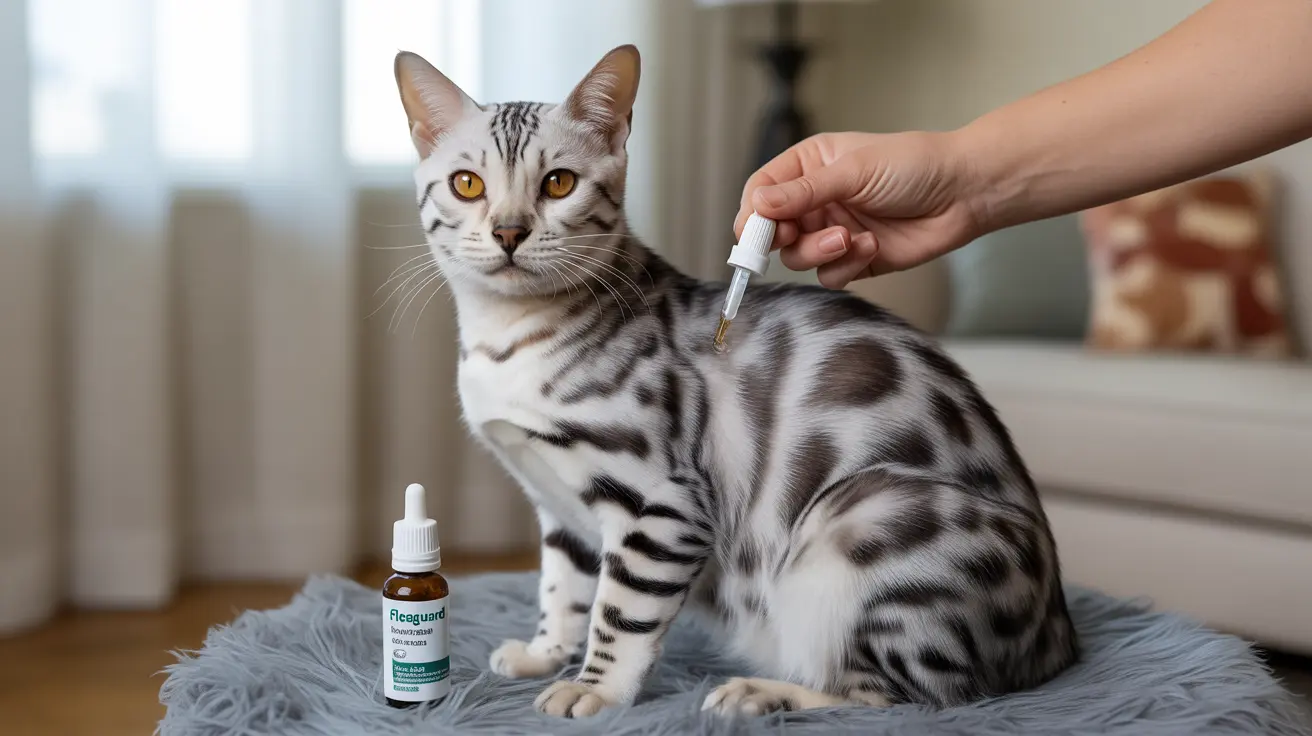Protecting your cat from fleas is essential for their health and comfort, but have you ever wondered exactly how flea medicine works to keep these persistent parasites at bay? Understanding the science behind flea treatments can help you choose the right option for your feline friend and use it most effectively.
From fast-acting oral medications to long-lasting topical solutions, modern flea medicines employ sophisticated mechanisms to both kill existing fleas and prevent future infestations. Let's explore how these innovative treatments protect your cat through different modes of action.
Understanding Topical Flea Treatments
Topical or "spot-on" flea medicines work through a fascinating process of distribution across your cat's body. When applied to the skin at the base of the neck, these treatments utilize your cat's natural skin oils to spread the active ingredients across their entire coat.
Most topical treatments create an invisible protective film that kills fleas on contact - no biting required. This makes them especially valuable for cats with flea allergies, as the parasites don't need to bite to be eliminated.
The Science Behind Contact-Kill Action
The active ingredients in topical flea medicines typically work by targeting the flea's nervous system. Common ingredients like fipronil and imidacloprid cause paralysis in fleas through overstimulation of their nerve cells. You might notice fleas exhibiting unusual "dancing" movements before they die - this is the treatment taking effect.
Oral Flea Medications: A Different Approach
Oral flea medicines work differently from topicals, circulating through your cat's bloodstream instead of spreading across their coat. These medications require fleas to bite your cat to ingest the active ingredient, but they can begin working remarkably quickly - some within just 30 minutes.
Speed and Effectiveness
While topical treatments typically begin working within 6-12 hours, oral medications can offer faster initial results. This makes them particularly useful for addressing severe flea infestations where rapid relief is needed. However, they don't provide the contact-kill benefits of topical treatments.
Breaking the Flea Life Cycle
Modern flea medicines often include ingredients called Insect Growth Regulators (IGRs) that prevent flea eggs and larvae from developing into adults. This dual-action approach not only kills existing adult fleas but also helps prevent future infestations by disrupting the flea life cycle in your home environment.
Long-Term Protection Strategies
Most flea treatments provide protection for about 30 days, though some newer products can last up to 12 weeks. Consistency is key - treating all pets in the household regularly is essential for preventing reinfestation, as most flea life stages actually exist in your home environment rather than on your pets.
Frequently Asked Questions
How does topical flea medicine kill fleas on cats without them needing to bite?
Topical flea medicines spread through your cat's natural skin oils, creating a protective layer across their entire coat that kills fleas on contact. The active ingredients disrupt the flea's nervous system upon contact with the treated fur or skin.
What is the difference between oral and topical flea treatments for cats in how they work?
Oral treatments circulate through the bloodstream and require fleas to bite to ingest the medication. Topical treatments spread across the skin and kill fleas on contact. Oral medications often work faster initially, while topicals provide continuous contact-kill protection.
How quickly do common flea medicines start working to kill fleas on cats?
Oral medications can begin working as quickly as 30 minutes after administration. Topical treatments typically start working within 6-12 hours, with significant flea kill rates within 24 hours.
Why is it important to use flea medications consistently and on all pets in the household?
Consistent treatment prevents reinfestation by breaking the flea life cycle. Since most flea eggs, larvae, and pupae live in the environment rather than on pets, treating all animals prevents any untreated pets from becoming reservoirs for new infestations.
How do insect growth regulators (IGRs) in flea medicines help prevent future flea infestations?
IGRs work by mimicking juvenile hormones in fleas, preventing eggs and larvae from developing into biting adults. This disrupts the flea life cycle and helps reduce the number of fleas in your home environment over time.






